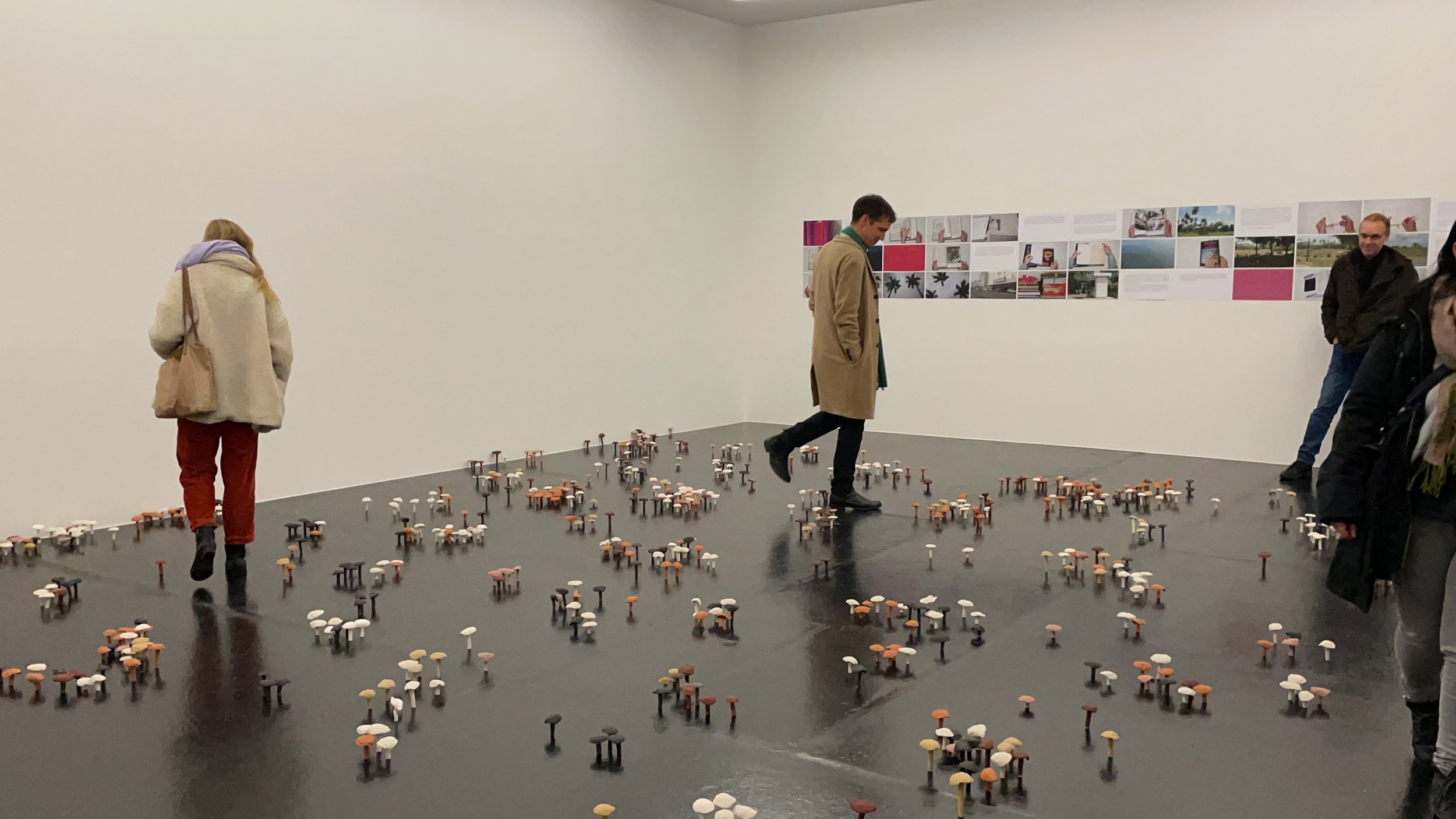









Medium: Fired un-glazed ceramic clay Size: variable; 3000 until today, Year: 2019 to ongoing, Installation view: Aargauer Kunsthaus, Aarau, 2021-2022
Europa is a large-scale sculptural installation that involves a community-based participatory workshop. In this work, existential questions of human life morph into ecological ones and vice versa. This work investigates how race, gender identity, class, and geographical location intersect with power structures to perpetuate privilege and discrimination.
Europa aims to create a space for dialogue and reflection on these complex issues through the community-based participatory workshop. The installation seeks to challenge and dismantle these power structures by engaging participants from diverse backgrounds, fostering a more inclusive and equitable society. Additionally, by emphasizing the interconnectedness of nature and culture, Europa prompts us to reconsider our relationship with the environment and how it shapes our social fabric.
I imagine each human being is like a mushroom- diverse and individual in nature but inter-connected through hair-like fungal threads called Hyphae. Like fungi stitch different organisms into relation, the migrants stretch worldwide while interweaving multiculturalism- exchanging ideas in a new society.
By choosing different earths and the firing process, mushrooms of different colors are created. To me, these different hues represent the different human skin tones - they give me a sense of diversity among people, much like an ecosystem. The European classification of cultural differences such as skin color and hair texture were not only important in the past, it is still relevant today and has not been overcome. This project asks questions about our coexistence and the conflicts between citizens and refugees - I would say it is an attempt to make the "others" in a Eurocentric society visible.
A few years ago, I moved from India to Switzerland. As an immigrant, a large part of my assimilation and integration consisted of language training. I developed this project in parallel with my German courses at the Autonomous School in Zurich. There I had the opportunity to meet many other immigrants, refugees and listened to the stories of asylum seekers who had to flee war-torn countries to find asylum in Europe, hoping for better living conditions. The result of brutal colonization includes; degradation of natural resources, capitalism, and rapid urbanization enforcing governmental, economic, political, and other social policies in the postcolonial societies that distribute resources unequally among their nation's members. Metaphorically the mushrooms are also a reminder of the spread and unfolding of organic movements of humankind, beyond controlled borders and doomed immigration policies.
The artistic research of the project was inspired and influenced by reading the book "The Mushroom at the end of the World" by Anna Tsing. It says that after Hiroshima was destroyed by an atomic bomb, "the first living thing to emerge from the destroyed landscape was a Matsutake mushroom."
But at the heart of this work are also the narratives and fates of the people I meet. I have conducted participatory workshops where refugees, migrants, and locals meet to model mushrooms together. We tell each other our stories during the workshop, speak in our native languages, and sing songs of Resistance. These workshops are not primarily about making mushrooms but serve as a connector and platform for meeting people. Shaping mushrooms becomes a spiritual journey, transferring people's hand-prints and time spent together into the mushrooms.
We share a moment of sharing a meal together, reading a piece or talking about life, our exile and our continuous journey.
Image courtesy: Artist
Special thanks to the people who have been part of the participatory workshops: Raissa Zimina, Azad Colemerg, Farid Ali Zai, Sylvia von Arx, Bruno Pfäandler, Lidia Weller, Ali, Karin Mangold, Rima Furter, Louisa Goldmann, Sharib Ali, Gianna Rovera, Isabelle Weber, Kein Raum workshop participants, Werner Beck, Eva Kramer, Beatrice Hauri, Thomas Kern, Nathanael Gautschi, Cecil Rüdlinger, Asha Hall, Donia Fares, Arpita Akhande, Tom Frankhauser and others.
My special thanks go to:
Louisa Goldmann, Jonas Struder, ECK, Keinraum, Aargauer Kunsthaus, Thomas Kern, Nathanael Gautschi.
To Participate in the Workshop: Please drop me an email at artishitaart@gmail.com